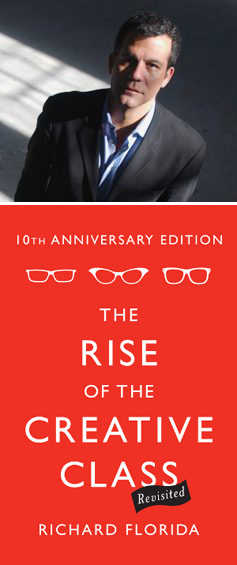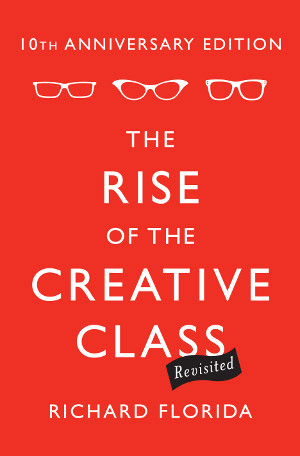
“Great communities have the same underlying characteristics,” says Richard Florida, author of “The Rise of the Creative Class” and “Who’s Your City?” “They have a vibrant downtown, and they offer something for folks who are looking for something distinctly different.”
Visiting Houston last week to address the annual conference of the International Economic Development Council, Florida revealed that he is not the opponent of suburbia that many make him out to be.
“When you look at the war of words between proponents of urban areas and the proponents of the suburbs, it boils down to what I call the narcissism of small differences,” he says. “I’d love to sit down and have a conversation with [noted demographer and frequent Florida critic] Joel Kotkin. He and I have a lot more in common than I think he realizes.”
Judging from Florida’s comments both during and after his keynote speech on Oct. 2 in Houston, he is right.
Just as Florida modified his book and titled the updated version “The Rise of the Creative Class: Revisited,” the professor at the University of Toronto and senior editor at The Atlantic has modified his own views on suburbia.
In fact, he says he sees more opportunities than ever in American suburbs, many of which are in varying stages of decline these days.
“We have to get beyond the urban-suburban divide that separates so many of us,” says Florida. “Our downtowns are growing again, and now we have a lot to do to retrofit our suburbs. We have to build more connected communities.”
The answer isn’t to abandon the suburbs, he says; it’s to rebuild them.
“Community building — whether we are talking about urban cities or the outer suburbs — really comes down to investing in infrastructure,” he says. “Over the next 50 years, we will build more cities than we have in the past 1,500 years. And our cities will drive economic growth.”
Spiky World
One thing that hasn’t changed for Florida is his passionate belief in what he calls “the creative class” — the knowledge workers who are proficient in technology, the arts, architecture, engineering, music or other creative endeavors that require special skills or exceptional talent.
“What is the fuel of economic growth? It is our creativity,” he says. “Creativity is the driving force of our ability to innovate. We are on track to create another seven to 10 million workers in the creative class in America, a category of workers that never had a jobless rate above 5 percent, even at the height of the Great Recession.”
Florida says he bristles at the notion – cited frequently by his critics – that this creative class is somehow elitist.
“Every single human being is creative,” he says. “We have millions of American workers in our service sector, from hairdressers to factory workers, who are highly creative. We just don’t engage them and their creative energy as effectively and efficiently as we should.”
Florida also blasts Thomas Friedman’s contention that “The World is Flat.”
“The world is not flat; it is spiky and more concentrated than ever,” notes Florida. “The top 40 mega-regions of the world produce 90 percent of the world’s patents and innovations.”
For these mega-regions to thrive in the future, says Florida, they will need to be strong in four areas: technology, talent, tolerance and territorial assets, or what he refers to as “the quality of the community itself.”
The way the world trains its work force also must change, he contends.
“Our current transfer-of-knowledge model does not work,” he says. “Colleges and universities are an old analog industry, and they must change to a model of discovery, learning and engagement. If they don’t, they will die.”
What have already died, he says, are the shopping malls of suburbia. “How we remake our dead malls will go a long way toward redefining and rebuilding our decaying suburbs,” he notes.
“Those malls must be turned into space that is used for something else,” he adds, “and it won’t be shopping.”

